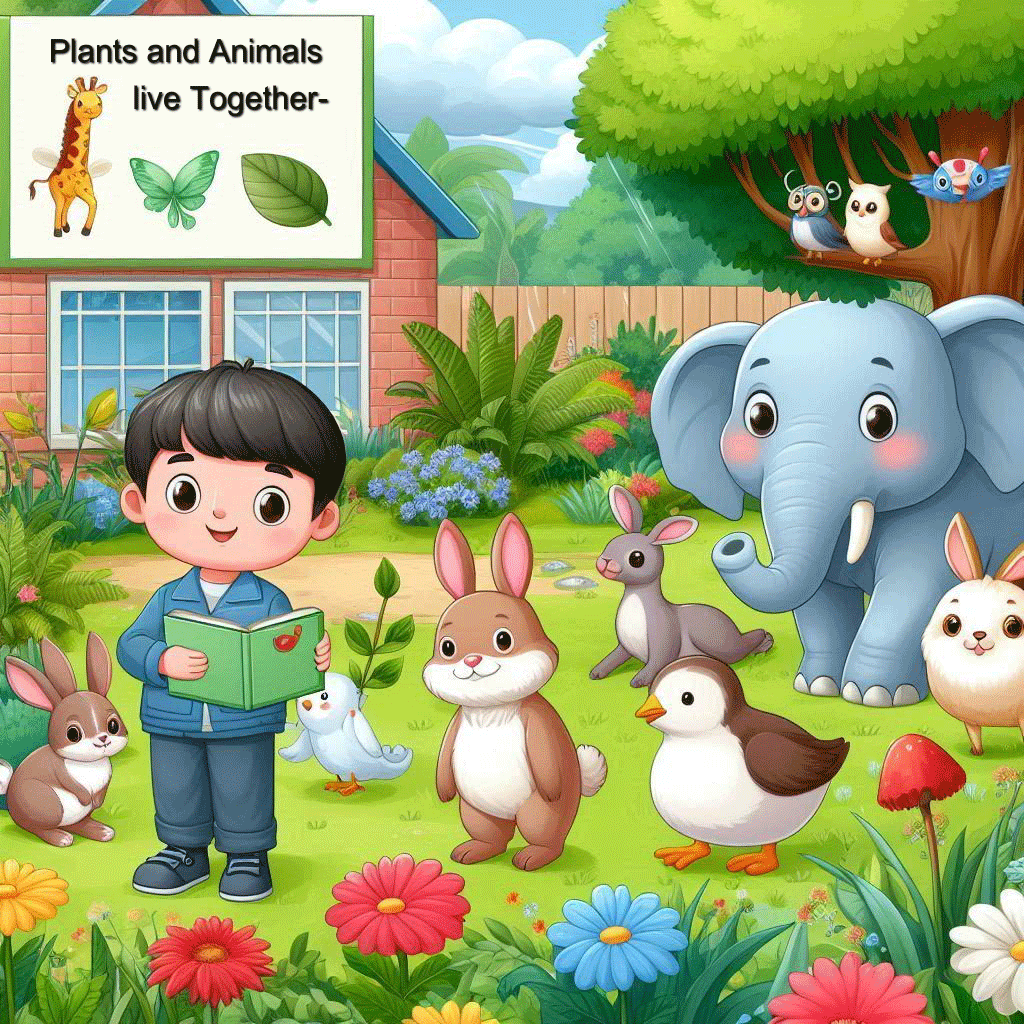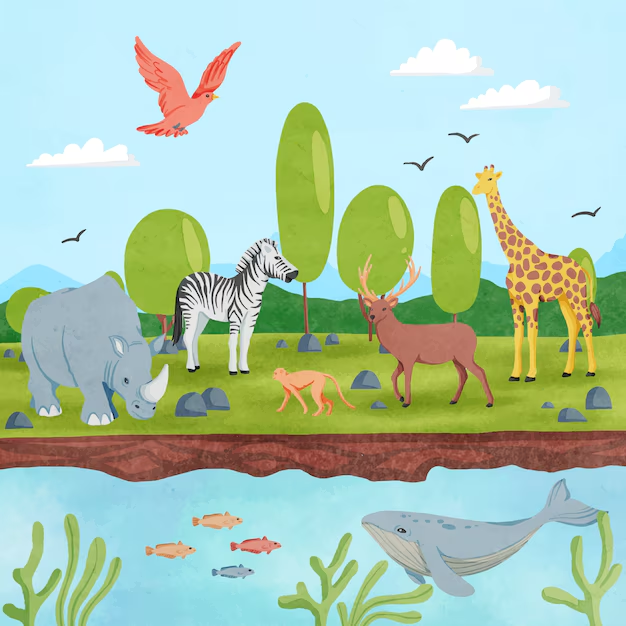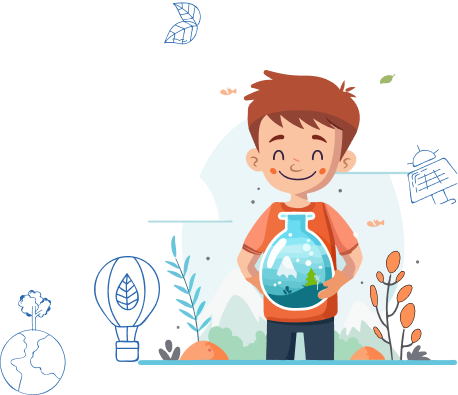Plants And Animals Live Together – Complete Guide For Class 3 EVS Chapter 5

Welcome to iPrep, your Learning Super App. Our learning resources for Chapter 5, “Plants and Animals Live Together,” in Class 3 EVS are meticulously designed to ensure students gain a comprehensive understanding of this essential topic. These resources include detailed notes, interactive exercises, and practical examples that cover the entire spectrum of key concepts. From fundamental principles of plant and animal interdependence to exploring life in the soil, the curriculum engages students in hands-on activities and reflective questions. It also fosters observational skills to recognize the vital relationships between ecosystems and biodiversity.
The concept of “Plants and Animals Live Together” in Class 3 EVS delves into the foundational principles of life by exploring the essential characteristics that define the interdependence of flora and fauna. This topic highlights how plants provide shelter, food, and a habitat for various animals, while animals contribute to the ecosystem by aiding in pollination and seed dispersal. Through engaging activities and observations, students learn to appreciate the intricate relationships that sustain life, fostering a sense of environmental awareness and respect for nature’s delicate balance.
Objective Of Learning “Plants and Animals Live Together”
The objective of learning Chapter 5, “Plants and Animals Live Together,” in Class 3 EVS is to help students understand the fundamental interdependence between plants and animals within ecosystems. This chapter aims to foster environmental awareness by teaching how plants provide essential resources such as food, shelter, and habitats for various animals, while animals contribute to the survival of plants through processes like pollination and seed dispersal. By engaging in hands-on activities and observations, students develop a deeper appreciation for biodiversity and the balance of nature, promoting respect for all living things in their environment.
Animal-Plant Interaction

As mentioned in the chapter “Plants and Animals Live Together”, Plants serve as habitats, food, and shelter for many animals. Examples include:
- Elephants: Feeding on grass.
- Caterpillars: Chewing leaves.
- Birds (like woodpeckers and tailorbirds): Building nests or feeding on tree trunks.
- Insects (like ants and moths): Resting on leaves or using plants to build nests.
Life in the Soil

Soil, the top layer of the Earth’s surface, is essential for both plants and animals. As per the chapter “Plants and Animals Live Together” from class 3 EVS It is home to many creatures like insects and earthworms that help decompose organic matter. Activities such as observing the soil around plants help students understand its texture, color, and living organisms.
Table: Soil Observation Activity
| Texture | Content |
| Rough, Smooth, Hard | Leaves, Insects |
Monsoon Changes
With rain, both plants and animals flourish. Hidden seeds sprout, and more creatures like earthworms and millipedes appear. According to class 3 EVS chapter 5 “Plants and Animals Live Together”, the rainy season brings new life to the soil and surrounding plants.
Plant-Animal Dependency

Different animals rely on plants for food, shelter, and survival, forming a complex web of interdependence that is crucial for maintaining biodiversity. According to the chapter “Plants and Animals Live Together” from class 3 EVS, Plants not only provide nourishment but also serve as habitats and protective spaces for various species. Here are some examples of how different animals depend on plants:
- Owls: Owls, especially species like barn owls, use tree hollows to nest and raise their young. These tree cavities offer them shelter from predators and harsh weather, making trees essential for their survival. Without old or mature trees, which develop natural hollows over time, many owl species would struggle to find suitable nesting sites.
- Camels: Adapted to arid environments, camels feed on tough, thorny plants like cacti, bushes, and other desert vegetation. These plants provide camels with moisture and nutrients that help them survive in the extreme conditions of deserts. Despite the sparse vegetation, camels have evolved to make the most of what little plant life is available, showcasing the essential role plants play in desert ecosystems.
- Monkeys: Many species of monkeys, such as capuchins and macaques, rely heavily on fruits, leaves, and seeds from trees for their diet. Trees not only provide monkeys with food but also serve as playgrounds, shelters, and travel routes in forested areas. Monkeys spend a significant amount of time in trees, which protect them from ground predators and offer a safe space for socializing and caring for their young.
- Bats and Leopards: Both bats and leopards use trees as resting places. Bats, especially fruit bats, feed on nectar, fruits, and flowers, and roost in the branches or hollows of trees during the day. Leopards, known for their climbing abilities, often rest on tree branches to stay safe from larger predators or to scout for prey. Trees provide leopards with both vantage points and a cool, shaded resting spot in the heat of the day.
- Caterpillars: Caterpillars are herbivores that feed primarily on plant leaves, making plants their primary source of nutrition. Many caterpillars, such as those of the monarch butterfly, are highly specialized and depend on specific host plants, like milkweed, for food. Without the right plants, these insects would not be able to complete their life cycle, and their populations would dwindle, affecting the entire ecosystem as they play a key role in pollination and as prey for birds and other animals.
Table: Animals Using Plants
Animal Usage of Plants Owls Use tree hollows to nest Monkeys Eat fruits Caterpillars Munch on plant leaves
Sounds of Birds
By paying attention to the sounds around us, we can identify different birds by the unique noises they make. Cup your ears and listen for bird sounds to sharpen your awareness of the animals nearby.

Table: Bird Sounds
The Class 3 EVS chapter 5 “Plants and Animals Live Together” also verbally explains certain bird sounds that we normally hear. these include-
Bird Sound Pigeon Gutru Gu Sparrow Chirp Chirp Crow Caw Caw Parrot Squawk Squawk Nightingale Nii Nii Duck Quack Quack Woodpecker Tap Tap
Activities and Reflection
A. Discussion Points
- Differences between soil textures (before and after rain).
- Observing plant growth during different months.
- Understanding animal-plant dependency.
B. Writing
- Animal Observation: Write down observations about animals near plants, their shapes, sizes, colors, and why they might be there.
C. Drawing
- Draw a plant and use dots to indicate where animals, birds, or insects were seen.
D. Caterpillar Life cycle
- Organize the steps in the lifecycle of a cater
Conclusion
Chapter 5, “Plants and Animals Live Together” in Class 3 EVS, beautifully highlights the interdependent relationships between plants and animals in nature. This chapter reinforces the understanding that plants provide essential resources such as food and shelter, while animals play a key role in maintaining the ecosystem. By exploring this chapter, students of Class 3 not only learn about plant-animal dependency but also develop observational skills through engaging activities. The examples of how creatures like owls, caterpillars, and camels rely on plants provide real-life context, making Chapter 5: “Plants and Animals Live Together” a valuable lesson in environmental awareness. By delving into this topic, Class 3 students can better appreciate the delicate balance that sustains life on Earth.
Practice questions on Chapter 5 - Plants and Animals Live Together
Get your free Chapter 5 - Plants and Animals Live Together practice quiz of 20+ questions & detailed solutions
Practice Now








